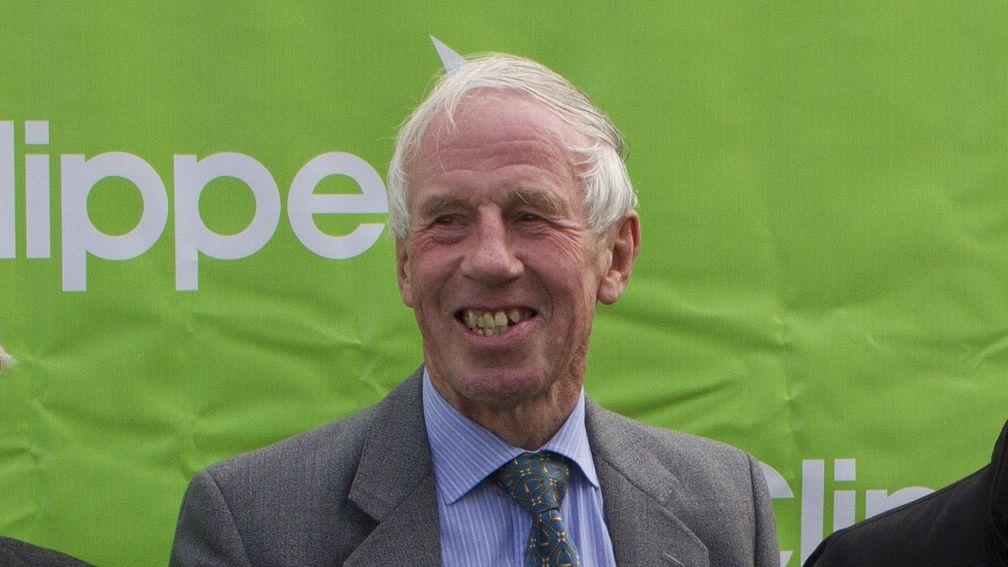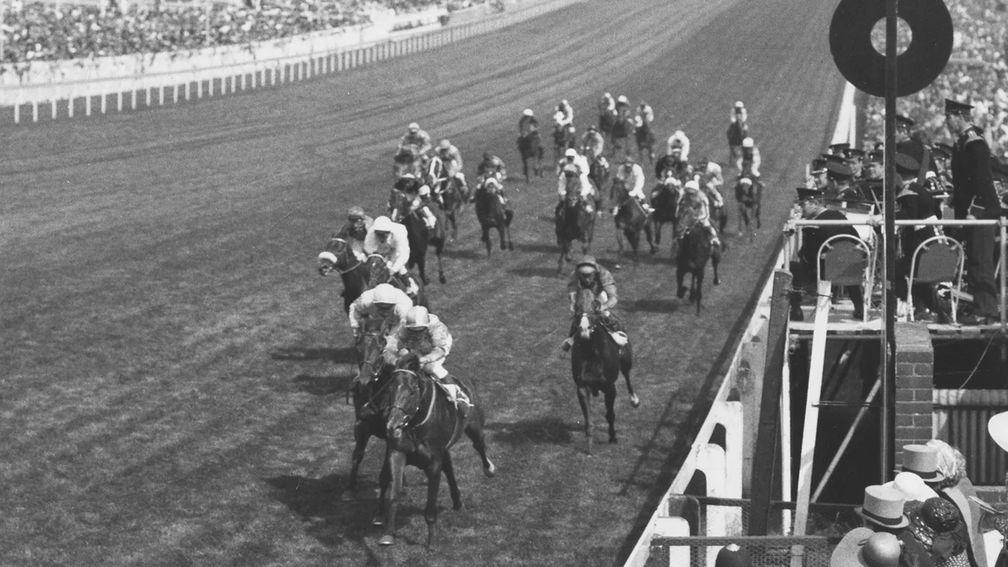Edward Hide: a supreme tactical judge with an unblemished record of integrity and honesty

Edward Hide was never champion jockey but he was the 'Cock of the North' on 16 occasions and when he retired in 1986 after a career spanning 36 years he was sixth in the all-time list of winningmost Flat jockeys.
He won six Classics, including the 1973 Derby on Morston and was associated with the top-class northern sprinter Lochnager. Together with his great rival and friend Lester Piggott, Hide was considered to be one of the most tactically aware jockeys of his generation. He was also scrupulously honest and a fine judge.
The only occasion I can recall when he was tempted to have a bet came one Easter Monday when he had the choice of two horses, both of whom he considered to be well above average, in the Northern Free Handicap, a valuable 7f event at Newcastle. Hide chose to ride Tudor Jig for Mick Easterby, but was concerned about the other one beating him so asked me to place a small 'saver' just in case.
The ground as usual in those days at Newcastle was heavy, very heavy, and the course was badly drained so there was a definite track bias. When the stalls opened the field headed towards the stand side, as was the norm, but with one exception. Hide on Tudor Jig went over to the far rails, and won not in a canter, but in a trot, by 20 lengths as the ground there was so much faster.
Tudor Jig was a high-class horse, although not a top-class one, but so was Don the horse who Hide turned down that day for he went on to win the St James's Palace Stakes at Royal Ascot with Hide back on board.
Hide was born into racing. His father Bill was a farmer-turned-trainer based near Wenlock Edge in Shropshire and the young Hide was astride a pony by the time he was two. By the age of 11 he was considered competent enough to begin riding out and two years later he had his first ride in public.
He was just 14 when he rode his first winner, a filly owned and trained by his father named Ritornello, who was disappointing but found her niche when dropped into a seller at Chepstow and got up 20 yards from the winning line. She was the first of the 2,593 winners Hide was to ride in Britain.
From as early as 1954, the year he was champion apprentice for the first time, Hide had an association with Captain Charles Elsey, who trained at Highfield in Malton and had one of the most powerful strings in the north. He rode his first Classic winner, Cantelo in the 1959 St Leger, for Elsey but it came in controversial circumstances for although she was a high-class filly who had finished runner-up to the great Petite Etoile in the Oaks, she had been beaten at 4-9 when short of work due to hard ground at home in the Park Hill Stakes on the first day of the St Leger meeting.
Having come on for that race she won the St Leger but there was plenty of dissent from punters regarding her improvement in form, fuelled in part by the fact she was owned by bookmaker William Hill.
That year Hide was crowned 'Cock of the North' for the third time, and eight years later, when Highfield was in the care of Captain Elsey's son Bill, he rode his second Classic winner when Pia, a filly he rated inferior to Cantelo, landed the Oaks. It was a day touched with sadness as Hide's father-in-law collapsed and died while staying with the family at Malton.
When Scobie Breasley retiring from riding, Sir Gordon Richards, who had always been a friend and admirer of Hide, and was then training in Wiltshire, offered him the job as his first jockey, which he readily accepted and moved south to Whitsbury.
His new job lasted just two years, for in 1970 Richards had a disagreement with his landlord, ironically Cantelo's owner William Hill, so he had to vacate Whitsbury. Unable to find premises he considered suitable, Richards quit training, despite numerous offers, and became racing manager to Lady Beaverbrook.
Hide headed back north to renew his association with Bill Elsey and they enjoyed instant success when winning the Lincoln on Double Cream.
Hide settled back into his newly built house on his 80-acre farm at Lower Hutton, a couple of miles from Malton, with wife Sue and children William and Elizabeth, and although he maintained his two years with Richards were the happiest of his career the next few years were to be the most successful.
He was top northern jockey for seven years in a row, which was a tribute not just to his riding skill but also his knowledge of the formbook for back in the early 1970s few jockeys employed agents and Hide spent hours poring over the Racing Calendar. Although by no means an extrovert character, he would regularly ring up a trainer to inform him his horse had a fine chance in a certain race and just by coincidence he was available to ride it.
Besides Elsey, Hide also had an arrangement to ride where possible for Bill Watts, who trained just outside Richmond. When Hide decided to go freelance the following year, he kept the association with Watts and together they won the 1972 1,000 Guineas with Waterloo.

Even better was in store for in 1973, after plenty of uncertainty, Hide took the ride on the once-raced Morston in the Derby. The colt was owned and trained by Arthur Budgett, who was in the twilight of his career and might have retired if Sir Gordon Richards had accepted his offer to train at his Whatcombe stables.
Hide had already turned down the ride on an outsider, but at the time he was approached by Budgett he was standing by to partner one of the favourites, Ksar, for trainer Bernard van Cutsem as regular rider Willie Carson had suffered an ankle injury and was not certain to be fit.
However, Carson got back in time and with Frankie Durr, who had ridden Morston on his only previous start, preferring to stick with his 2,000 Guineas winner Mon Fils, the northern ace came in for a ride that gave him a place in history, although he admitted he was tempted to miss Epsom and ride instead at Ripon.
Travelling down by train from Malton and taking the bus to the track, Hide first set eyes on his Derby mount when he saw him in the paddock, but in a driving finish he held on by half a length from Lester Piggott on Cavo Doro, who Piggott had bred. The following day it was business as usual with Hide having five rides at Carlisle.
Two years later Hide was leading the jockeys' championship when he broke a leg in a fall at York on Friday June 13, and although he returned 11 weeks later, the injury cost him any chance of a title he was destined never to win. It also cost him the ride on the German-trained colt Star Appeal, who he had already partnered to win the German 2,000 Guineas and was due to ride again on the Sunday. Star Appeal went on to win the Eclipse Stakes and Prix de l'Arc de Triomphe with Greville Starkey in the saddle.
During the mid-1970s Hide was also riding regularly for Mick Easterby and, having partnered Lochnager to win four top sprints in 1976, he went on to win the following year's 1,000 Guineas for Easterby on another of his bargain buys Mrs McArdy.
Although related by marriage and a regular rider of the horses trained by a young Michael Stoute, Hide's only job in Newmarket came in 1978 when he was appointed first jockey to Clive Brittain. The pair had a fine first season culminating in the win of Julio Mariner in the St Leger, but the second year, things did not go so well and Hide went back north, with Watts one of several trainers keen to retain his services.
After spells in India and then Hong Kong, Hide quit riding aged 49 in 1986.
With his unblemished record of honesty and integrity he seemed an ideal candidate to become a stipendiary steward, but he was ahead of his time as in those days former jockeys were not considered suitable to be employed in such positions and his application was turned down. He never reapplied and spent his retirement playing tennis and golf and looking after his farm.
Read this next:
'He was a genius' - Mick Easterby leads tributes following death of Derby-winning jockey Edward Hide
Published on inObituaries
Last updated
- Alastair Down: a master conjuror of words and a cherished advocate for racing
- Mark Bradstock: the small-scale trainer who defied the odds to win jump racing's ultimate prize
- Grace, charm, style and knowledge - vibrant Maureen Mullins provided the DNA for Irish racing
- An irrepressible character with a ready wit: Alan Sweetman reflects on the life of Tommy Kinane
- Lady O'Reilly: gracious and cosmopolitan host whose love for horses was genuine and rooted in a lifelong passion
- Alastair Down: a master conjuror of words and a cherished advocate for racing
- Mark Bradstock: the small-scale trainer who defied the odds to win jump racing's ultimate prize
- Grace, charm, style and knowledge - vibrant Maureen Mullins provided the DNA for Irish racing
- An irrepressible character with a ready wit: Alan Sweetman reflects on the life of Tommy Kinane
- Lady O'Reilly: gracious and cosmopolitan host whose love for horses was genuine and rooted in a lifelong passion